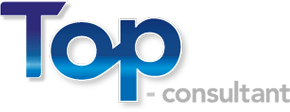Is hybrid working really more productive? ...
Some say that we’re more productive as a result of the move to remote and hybrid working, and that’s because we are producing more, but this is probably not relative to the effort we are putting in.
We’ve worked harder since the pandemic hit, but we know that it’s time we worked smarter. According to Microsoft, online meetings more than doubled, 40 billion more emails were sent to commercial and education companies on its platform and there’s a 66% increase in the number of people working on shared documents.
This has created a perception of high productivity only because we’re producing more, not because we’re being more productive – as we all know, working more doesn’t always mean a better or greater output.
Use AI to help employees to work less
The good news is that the accelerated adoption of digital ways of working, in response to the pandemic, has provided us with a gift. The gift being the opportunity to leverage data and technology to better understand how we can be most productive, when to collaborate digitally or in person and when to focus, based on quality of output, how well we engage and how we feel and perform in particular moments and environments.
Importantly, this data and insight can also help us understand how to prevent the risk of merging personal and professional lives (work-life-blend), and instead have a work-life-balance.
Simple AI nudges to employees can be sent if they’ve been working too many hours or been in too many video calls, which can cause digital fatigue.
As businesses further digitise their operations to survive the pandemic and evolve in the new hybrid world, more data is produced.
This data can be valuable to businesses by giving more meaningful insights into not only concepts such as productivity, how we collaborate, and when we engage with each other, but also how hybrid working impacts people differently.
How to use Teams, Zoom and Slack data to optimise work
Use of applications such as Microsoft Teams, Zoom and Slack has skyrocketed. MS Teams went from 32 million daily active users to 145 million by April 2021.
Unknown to most, the data these activities generate is easily and readily available to organisations. These data sources that can be leveraged to understand when and where we are most productive, how we best collaborate, what kind of leader and structure we need based on our engagement and how our wellbeing can be rebalanced.
Take Microsoft Viva for example, its Insight Module offers wellbeing support with integrations to applications like Headspace, whilst also helping managers foster productivity and empower leaders to optimise business productivity.
It presents other opportunities too, notably in the diversity and inclusion space. Richer data means that we can understand intersectionality more intimately, creating opportunities to provide bespoke support for those that are at a disadvantage in sometimes aged institutions and cultures.
This level of insight creates opportunity for the physical space too, where companies like WhichDays are innovating, allowing leaders to promote concepts like activity-based working. National Grid, for example, used similar insights to reduce its operational costs by £10m by implementing activity based working seeing an 8 percent increase in productivity.?
HR should implement innovations in technology
The next iteration to this adoption of tools and use of data is making it smarter. Artificial intelligence, automation and machine learning can be harnessed to adopt new behaviours by identifying inefficiencies in our outputs and recommending more effective ways to work.
AI assistants like Cortana, Siri and Google Assistant are seeing considerable growth year-on-year, and with it more features in support of the modern workplace. Combined with hybrid working and our new technology capabilities, we see endless possibilities.
Some cars for example, know when we’re getting tired after a long drive because our braking reactions are reduced and it recommends we stop for a break; similarly, the same performance measures can be applied to people to bolster wellbeing through optimised ways of working and performance output, perhaps improving lives on the way.
This level of personalised support for us in the workplace should be driven by HR and technology alike to create a stronger, united and more efficient workplace experience. Data scientists now need to be a more integrated part of HR, helping us to leverage data and turn insights into improved efficiencies in work, identifying areas where support may be needed and providing tools to help people day-to-day.
This is the chance for businesses to understand their own data as a reflection of personalised employee outputs, as producers of things, regulations, content and data, in order to better our work lives, our mental health and our wellbeing.
To read the original article
CLICK HERE.

